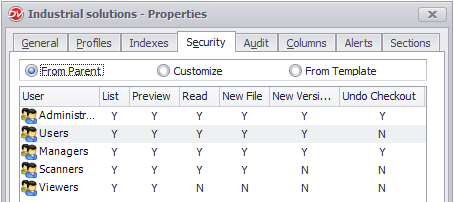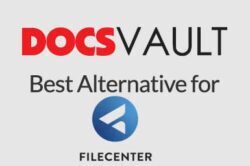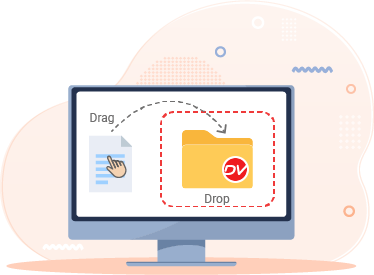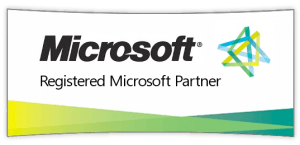How to Ensure HIPAA Compliance with Docsvault?

Introduction
Ensuring compliance with HIPAA (Health Insurance Portability and Accountability Act) is a fundamental obligation for healthcare organizations, as it mandates strict measures to safeguard the privacy and security of patient records, particularly Protected Health Information (PHI). One of the most effective ways to achieve this is by utilizing robust document management software, which simplifies the management and protection of sensitive patient data, ensuring compliance with HIPAA’s stringent requirements regarding PHI.
How DMS Assists with HIPAA Compliance
HIPAA places a heavy emphasis on two critical aspects: 1) the proper handling and disclosure of a patient’s private information and 2) the prevention of breaches of patient confidentiality. Failure to comply to these key aspects can lead to severe legal penalties, financial repercussions, and loss of patient trust. However, with the help of Docsvault, a leading document management system, healthcare organizations can efficiently address these challenges and ensure full HIPAA compliance.
Here are some of the ways Docsvault can support HIPAA compliance:
1) Securing Patient Records with Permission-Based Access Control
One of the primary requirements under HIPAA is the complete protection of Protected Health Information (PHI). This involves implementing rigorous security measures to prevent unauthorized access. Docsvault ensures this by offering permission-based security, allowing healthcare providers to control who can access specific patient information.
The system’s user and group-based security features allow administrators to assign access rights only to authorized personnel. This means sensitive patient data is shielded from unauthorized access, reducing the risk of accidental exposure or intentional data breaches. For instance, a doctor may have full access to patient records, while a front-desk employee may only view non-sensitive information.
Additionally, Docsvault provides an audit trail feature, which tracks all user activities, including who accessed, modified, or shared specific records. This ensures accountability and helps organizations identify potential security risks, further fortifying patient data against breaches.
2) Employee Training on Privacy Regulations and Procedures
Another crucial component of HIPAA compliance is ensuring all employees are well-versed in privacy regulations and the necessary procedures for safeguarding patient information. The success of any data protection program hinges on the competence of the staff in handling sensitive data responsibly.
Docsvault makes employee training more manageable by providing a platform that is easy to use and understand. The system’s intuitive interface and clear security protocols ensure that even non-technical employees can quickly grasp how to maintain HIPAA standards. This streamlines the training process, enabling staff to consistently apply the best practices for data protection, reduce errors, and limit the likelihood of HIPAA violations.
3) Establishing Procedures for Information Disclosure and Access Control
HIPAA also requires healthcare organizations to establish strict procedures for the disclosure of patient information. This includes controlling how information is shared with patients, healthcare providers, or third parties and ensuring that only authorized personnel can access or edit this information.
Docsvault allows healthcare firms to create and enforce these procedures using access-based rights management. With Docsvault, administrators can assign specific permissions to users based on their roles. For instance, permissions can be configured to allow certain users to view, edit, export, or delete records, while others may only have limited access to non-sensitive parts of the file.

This flexibility ensures that patient data is only shared with those who have the appropriate authorization. It also helps healthcare firms manage requests for information efficiently, whether they come from patients requesting their medical records, staff needing to update patient information, or third-party entities seeking access to specific data.
Additionally, Docsvault’s version control and document retention policies ensure that patient records are handled according to HIPAA’s guidelines on data storage, updates, and disposal. This ensures that healthcare providers can manage patient information responsibly from creation to archiving or deletion.
4) Implementing Regular Audits and Monitoring for Compliance
HIPAA requires that healthcare organizations regularly review and monitor their data management practices to ensure ongoing compliance. Docsvault makes this process seamless by offering built-in audit trails that track user activity, file access, and document changes.
These audit trails allow healthcare firms to perform regular checks on who has accessed specific files, what changes were made, and if any unauthorized attempts were made to view or alter patient records. This capability helps organizations identify potential security threats early and take corrective actions before a breach occurs.
Regular auditing also helps firms stay prepared for potential HIPAA compliance reviews or inspections by providing detailed reports on how patient information has been handled over time.
5) Simplifying HIPAA Compliance with Automated Workflows
In addition to managing data security, healthcare organizations must also ensure that their workflows and processes comply with HIPAA regulations. Docsvault enables organizations to automate their document workflows, ensuring that processes like patient record updates, information requests, and data sharing are handled consistently and according to established procedures.
Automated workflows help eliminate manual errors, ensure timeliness in handling requests, and maintain a clear record of all actions taken within the system. By streamlining these processes, healthcare providers can reduce the administrative burden of HIPAA compliance and improve their overall efficiency.
Read Case Studies:
AllPoint Home Health
Marion County Public Health
Conclusion: Ensuring HIPAA Compliance with Docsvault
In today’s healthcare environment, ensuring the privacy and security of Protected Health Information (PHI) is not just a legal obligation but also a critical component of maintaining patient trust. With Docsvault, healthcare organizations can implement comprehensive security measures, establish clear access control protocols, and streamline their processes to meet the rigorous requirements of HIPAA regarding PHI.
By utilizing features like user/group-based security, access control, audit trails, and automated workflows, Docsvault provides a robust document management solution for healthcare providers seeking to protect sensitive PHI and ensure ongoing HIPAA compliance. Whether it’s securing records, training employees, or managing disclosure procedures, Docsvault offers the tools necessary for a compliant and efficient healthcare operation. Furthermore, while there is no official HIPAA certification for Business Associates, Docsvault has implemented strict internal procedures and trained its employees on HIPAA policies to ensure adherence to HIPAA’s requirements.
This article covers:
- Introduction
- How DMS Assists with HIPAA Compliance
- 1) Securing Patient Records with Permission-Based Access Control
- 2) Employee Training on Privacy Regulations and Procedures
- 3) Establishing Procedures for Information Disclosure and Access Control
- 4) Implementing Regular Audits and Monitoring for Compliance
- 5) Simplifying HIPAA Compliance with Automated Workflows
- Conclusion: Ensuring HIPAA Compliance with Docsvault






